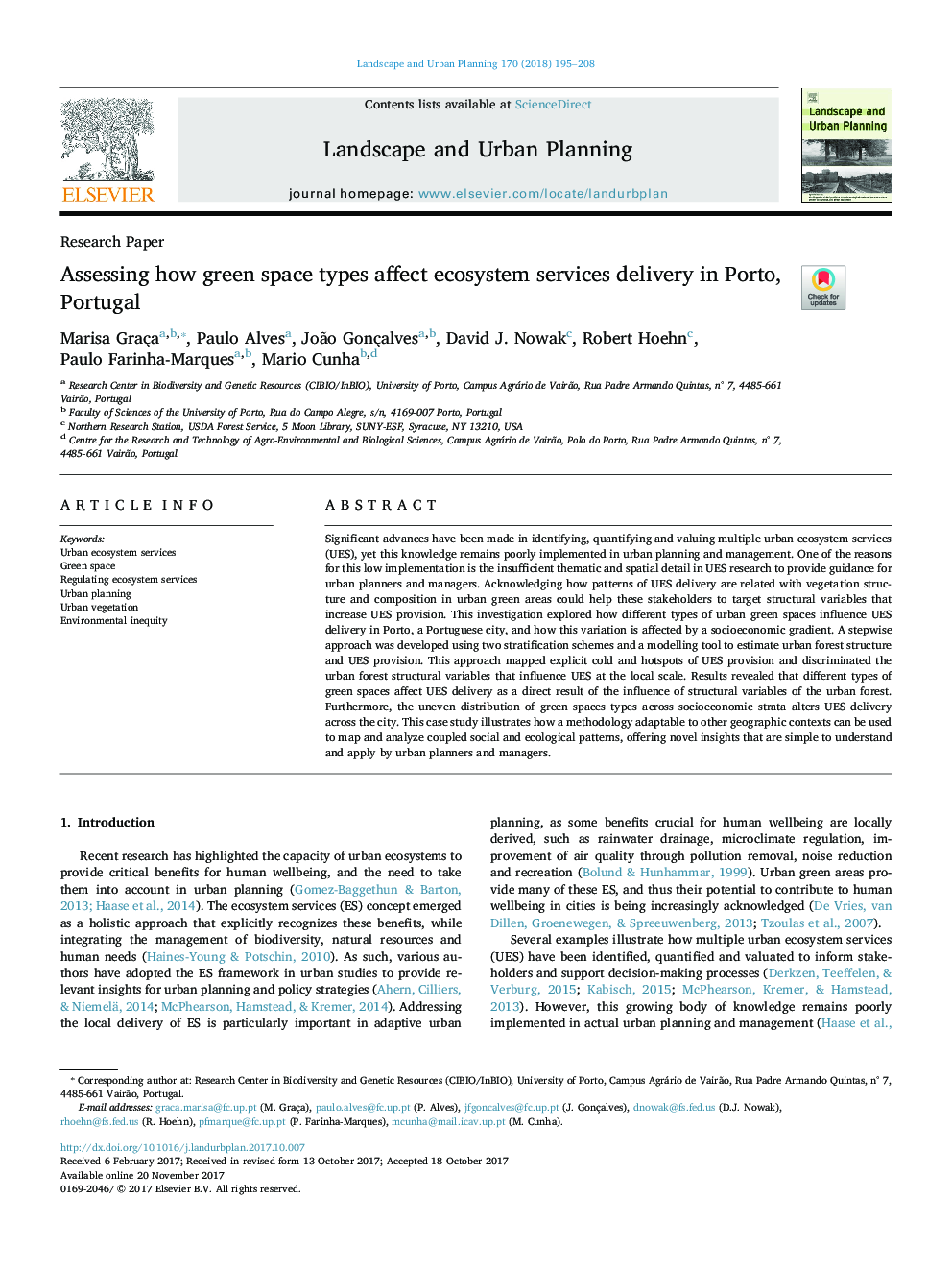| Article ID | Journal | Published Year | Pages | File Type |
|---|---|---|---|---|
| 7460060 | Landscape and Urban Planning | 2018 | 14 Pages |
Abstract
Significant advances have been made in identifying, quantifying and valuing multiple urban ecosystem services (UES), yet this knowledge remains poorly implemented in urban planning and management. One of the reasons for this low implementation is the insufficient thematic and spatial detail in UES research to provide guidance for urban planners and managers. Acknowledging how patterns of UES delivery are related with vegetation structure and composition in urban green areas could help these stakeholders to target structural variables that increase UES provision. This investigation explored how different types of urban green spaces influence UES delivery in Porto, a Portuguese city, and how this variation is affected by a socioeconomic gradient. A stepwise approach was developed using two stratification schemes and a modelling tool to estimate urban forest structure and UES provision. This approach mapped explicit cold and hotspots of UES provision and discriminated the urban forest structural variables that influence UES at the local scale. Results revealed that different types of green spaces affect UES delivery as a direct result of the influence of structural variables of the urban forest. Furthermore, the uneven distribution of green spaces types across socioeconomic strata alters UES delivery across the city. This case study illustrates how a methodology adaptable to other geographic contexts can be used to map and analyze coupled social and ecological patterns, offering novel insights that are simple to understand and apply by urban planners and managers.
Keywords
Related Topics
Life Sciences
Agricultural and Biological Sciences
Ecology, Evolution, Behavior and Systematics
Authors
Marisa Graça, Paulo Alves, João Gonçalves, David J. Nowak, Robert Hoehn, Paulo Farinha-Marques, Mario Cunha,
